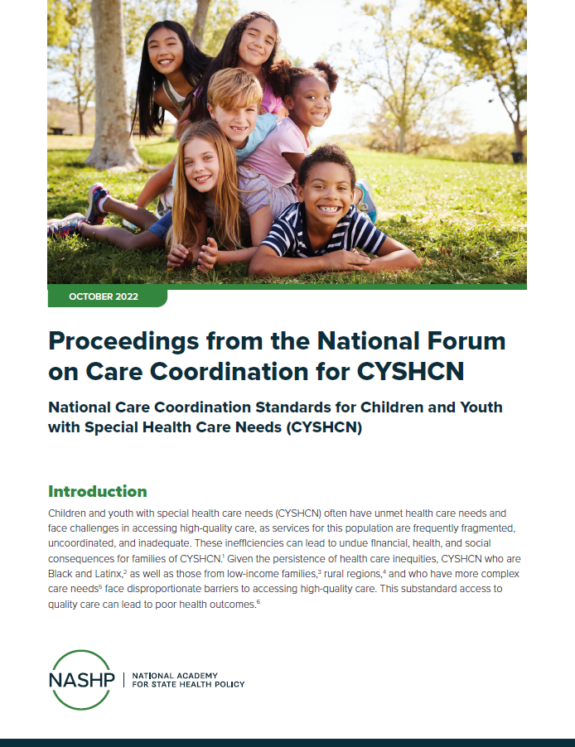Care Coordination for California’s Children and Youth with Special Health Care Needs: Building Blocks from other States
For the more than one million children and youth with special health care needs (CYSHCN) in California, care coordination can be critical for linking them and their families to needed medical and non-medical services, and for providing logistical assistance and emotional support. These children and their families face myriad challenges: coverage and access to needed pediatric specialists can be inadequate or inconsistent, and navigating the various health and non-health systems can be confusing and frustrating. As a result, CYSHCN often receive fragmented or duplicative services and typically have many more unmet medical needs than other children. Low-income, minority, and uninsured children are at particular risk for poor coordination of services.
Coordination of care is also important to providers and policymakers, who are interested in ensuring that vulnerable children with complex needs receive appropriate, timely, high-quality services in a cost-effective manner.
California has a long history of caring for CYSHCN. The California Children’s Services (CCS) program provides diagnosis and treatment, medical case management, and physical and occupational therapy services for children under the age of 21 who have a CCS qualifying condition and meet financial eligibility criteria. The CCS program is administered as a partnership between the California Department of Health Care Services (DHCS) and county health departments.
There is a wide range of views about the current state of care coordination for children in California. Some stakeholders view the state-county CCS partnership system as a model that should be adopted by other states. Others find the current system lacking, with inconsistent quality and access across counties and insufficient funding. In addition to case management provided by county entities for CCS enrollees, there are several other entities conducting some type of care coordination. They include care management from the state’s Regional Centers, county mental health programs, DHCS, local schools, and managed care organizations, as well as hospitals, specialty clinics, home care providers, and physician practices. Care coordination in California is not developed as a single, child-centered program, which may result in duplication and confusion, with less than optimal outcomes.
This issue brief delineates for policymakers, local providers, and consumer advocates the key building blocks of a care coordination policy/program, describes how other states have designed these elements, suggests considerations for California given its history and health care landscape, and presents some lessons from other programs that may help in building or improving care coordination for CYSHCN in California.



